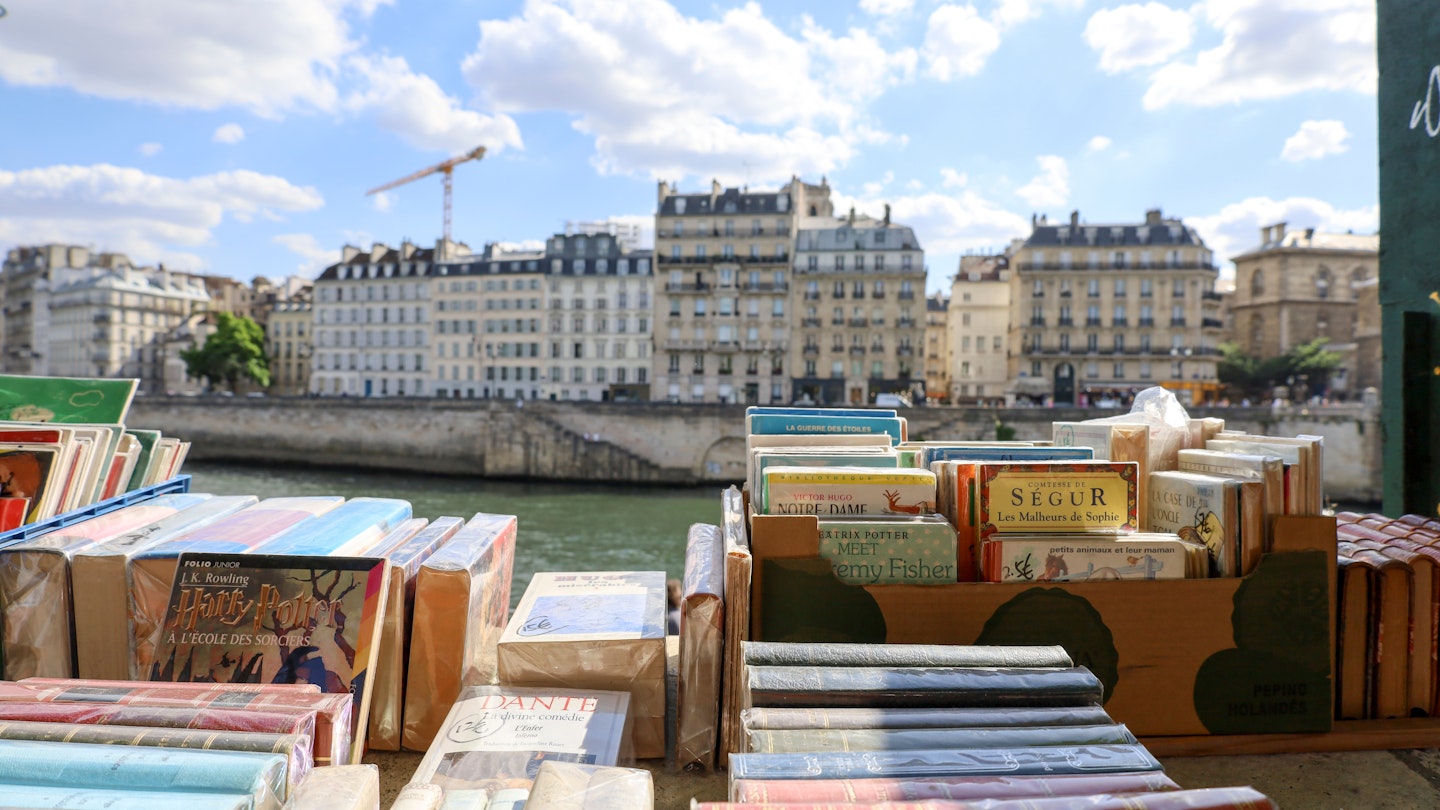Bouquinistes of the Seine River: Paris’ Living Heritage
For centuries, the iconic wooden bookstalls lining the banks of the Seine have been an integral part of Paris’ charm. However, as the city gears up to host the Olympics, the government’s initial decision to shut these kiosks throughout the event, citing security concerns, ignited widespread controversy and disappointment. This unprecedented move affected the book stalls, which have occupied their full-time residences along the Seine for more than 160 years.
You could say that the riverside booksellers and their iconic green book stalls are as much a fixture of the Seine as the Eiffel Tower is of the city’s skyline. In a remarkable turnaround, French President Emmanuel Macron intervened, emphasizing the importance of these booksellers to the city’s heritage. Consequently, he declared the booksellers (bouquinistes) a “living heritage of the capital,” allowing them to remain open during the Olympics.
Macron “has asked the interior minister and the Paris prefect’s office to ensure that all of the booksellers are preserved and that none of them are forced to move,” stated the president’s office.
The “Enemies of Poetry”
Earlier last year, Paris police warned the 240 booksellers that 570 of the 900 boxes would have to be dismantled. Authorities claimed these boxes could serve as potential hiding spots for explosives and safety hazards, impeding pedestrian traffic. The opening ceremony for the summer games is set to take place on the Seine, where upper quays expect to attract hundreds of thousands of spectators.
The city offered to renovate and reinstall damaged stalls and to relocate the booksellers. Nevertheless, news of potential open-air bookshop closures during the games renewed public interest and mobilized support for the beleaguered booksellers, who recently contended with the challenges of social unrest, the pandemic, and competition from online retail giants.
The issue escalated to the national spotlight last year when a prominent newspaper published a passionate opinion piece supporting the booksellers. Among the supporters was famous French author Alexandre Jardin, who argued that the bouquinistes were more than mere vendors; they embodied Paris itself and its enduring connection with literature.
“The Seine flows between rows of books,” Jardin stated, believing that it was wrong to close such a beloved part of Paris before such an enormous international event. He criticized the decision as a lack of regard for cultural heritage, declaring these moves as “enemies of poetry.”
The recent decision allowing the bookstalls to remain open not only represents a victory for the booksellers but also reaffirms Paris’s identity and cultural heritage.
A Tradition for Five Centuries
Every morning, the riverside bouquinistes lift the lids of their stalls, continuing a rich literary tradition that began 450 years ago when their predecessors sold books from baskets or spread their wares on trestle tables along the Seine.
The inauguration of the Pont Neuf (“New Bridge”) in 1606 created a lively outdoor marketplace for book peddlers, who vied for customers alongside various entertainers and vendors. However, local bookshop owners grew frustrated with the success of these hawkers, prompting a series of attempts to relocate them. Thus, in 1649, peddlers were banned from Pont Neuf. This ban initiated a historical pattern of efforts to remove the quayside booksellers.
Despite facing repeated regulations and challenges—including a fine and imprisonment ordinance in 1721 and exclusion from urban transformation plans by Baron Haussmann in the 19th century—the booksellers finally secured fixed lots along the Seine in 1859. In 1891, a significant development allowed vendors to leave their goods in stalls overnight, solidifying their presence in the French capital.
By around 1900, boxes were painted the same “wagon” green hue as other notable street features, creating visual coherence to the city’s aesthetics. Remarkably, the stalls maintain much of their historical design over a century later.
How to Enjoy the Bouquinistes on Your Next Visit to Paris
Spanning the length of two miles on either side of the Seine, the bouquiniste trail stretches from the Quai François Mitterand to the Quai de l’Hôtel de Ville on the Right Bank, and from the Quai Voltaire to the Quai de la Tournelle on the Left Bank. This scenic trail allows flaneurs to pass locations such as the Notre Dame Cathedral and the Louvre, all while enjoying picturesque views of the Seine and the Eiffel Tower.
While they represent a treasured aspect of Paris culture, the bouquinistes are often mistakenly referred to as a UNESCO World Heritage asset. In reality, it is the banks of the Seine that were inscribed on the World Heritage List in 1991. The booksellers instead achieved recognition in France’s version of the intangible cultural heritage list in 2019, serving as a step toward future UNESCO status.
Seine Bouquinistes Throughout the Years
1920s

1930s

1940s

1950s

1960s

1970s






